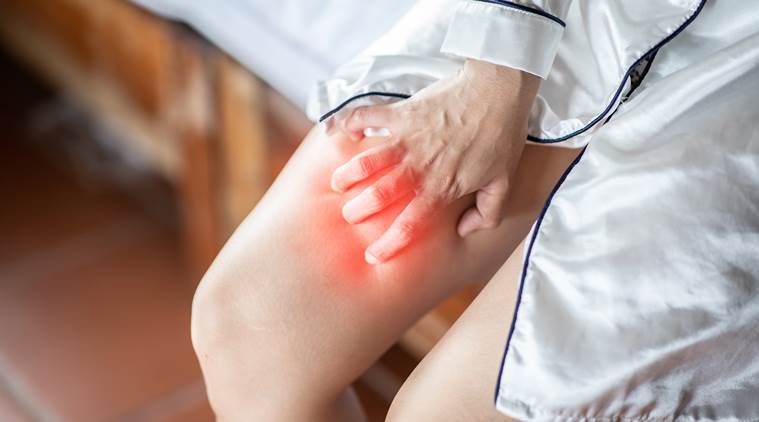While you can be itchy all over, it is the thighs that sometimes cause most annoyance.

With winter officially here, skin troubles are likely to come knocking, too. Among them, redness, constant itchiness, rashes and bumps are most common. But you cannot spend your months resisting the urge to scratch, waiting for the weather to change so you can get rid of the dryness. And while you can be itchy all over, it is the thighs that sometimes cause most annoyance. Find out what is causing itchy thighs and what you can do to stop it.
Dry skin
The most obvious cause for the itchiness would be dry skin. In winters, the skin loses moisture, causing it to become flaky. Poor skincare, age, and use of harsh soaps and lotions on sensitive skin are other contributing factors. Apply some coconut oil or a moisturiser to soothe the skin.
Do your eyelids twitch often? Here’s what it could mean
Chafing
Chafing happens when the thighs get injured due to friction. When they get rubbed against tight clothing or another body part, they get chafed. Chafing can cause irritation, redness and itching. It can get extremely painful and give rise to a burning sensation. Applying petroleum jelly can provide some relief.
Heat rash
A heat rash comes up when the sweat ducts get clogged, leading to sweat getting trapped under the skin. Just like chafing, these rashes come up when there is a lot of rubbing. The groin, thigh area, armpits, chest and neck are most affected. There is a lot of redness and itching, which goes away on its own when the body cools down.
Dermatitis
An inflammation of the skin, dermatitis is of broadly two types: atopic and contact. While the former is also called eczema, the latter occurs when the skin comes in contact with things that can cause reactions. As such, the symptoms can include intensely itchy skin, rash, and fluid-filled blisters.
Is your chapped lip bothering you? Know why it could be happening
Other causes
Your thighs could also be reacting to fungal infections or microscopic parasites. So before you book an appointment with your doctor, wear loose clothes, use an over-the-counter itch medication, and try some home remedies. If nothing works out, check with a dermatologist at the earliest.
Source: Read Full Article
